All About AFF Skydiving Training and How We Do It Better
Skydiving Training
Posted by: Wisconsin Skydiving Center 10 months ago
The dream of human flight is one that calls many adventurers to the sky. And for all those who take the leap with a tandem skydive, there are many who want more than a once-in-a-lifetime adrenaline rush.
Earning a skydiving license is easier than you probably think it is! But that doesn’t mean there isn’t work involved. Completing a training course to learn how to skydive solo is only the first step in the incredible journey that makes up the skydiving license progression.
Searching for a “skydiving school near me” and finding the right instructor is the best place to start. From there, you can move through the student levels and eventually achieve the coveted status of certified skydiver.
At Wisconsin Skydiving Center, we have everything you need to learn how to skydive, from your very first jump to becoming a pro. And we even have our very own custom program to ensure you get the best training possible.
So is it easy to learn skydiving? Read on to find out what it takes to become a licensed skydiver, and why Wisconsin Skydiving Center is the best place to be a student.
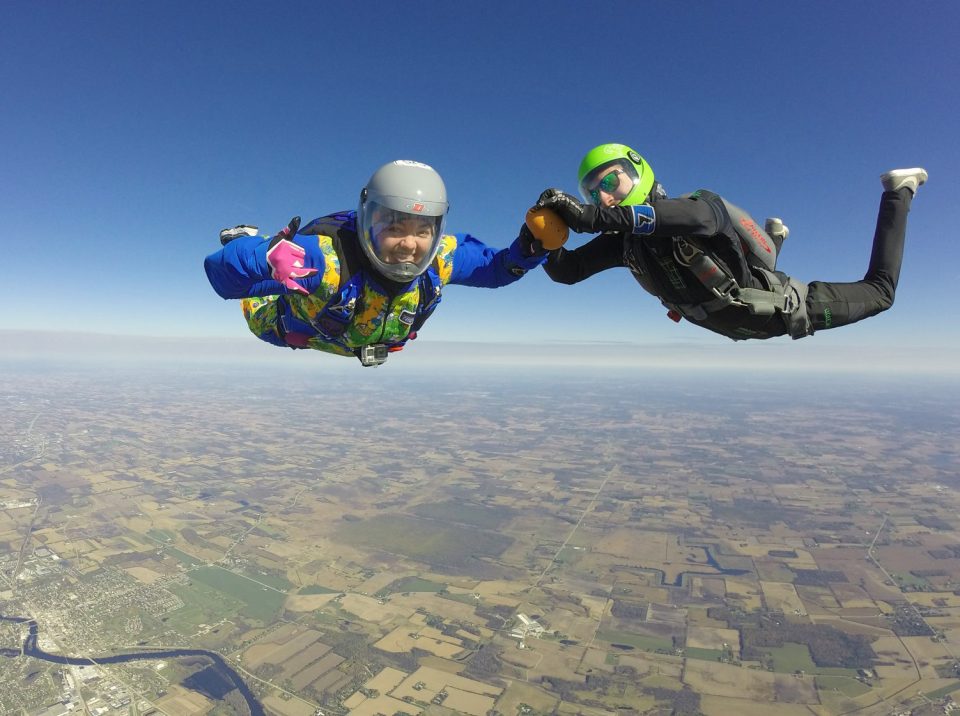
What is AFF Skydiving?
The acronym AFF stands for Accelerated Freefall. AFF is a tried and true method of skydiving instruction that has been developed using the guidelines set forth by the United States Parachute Association (USPA).
AFF training comes immediately after the completion of the required tandem skydive, and is the first time a skydiver jumps with their own parachute. It’s also when new skydivers learn all of the techniques, skills, knowledge, and rules that will save their life and sustain the fun for as long as they continue jumping out of airplanes.
Every AFF program begins with a comprehensive ground course. In this six to eight hour course, you’ll learn how to exit an aircraft with a stable body position, determine your altitude in freefall, deploy your parachute, and steer your parachute back to the designated landing area.
You’ll also become familiar with the different pieces of skydiving equipment that you will use during your student progression, skydiving jumpsuit components, and how to handle any emergency situations that might arise. And you’ll be able to answer questions like, “Can first time skydivers go solo?” and “How quickly do skydivers fall?”
After this course, it’s time to fly! Don’t worry, though, you won’t be going it alone. You’ll be accompanied by two USPA certified skydiving instructors who are there to help you maintain stability in freefall, and, if needed, assist you during your parachute flight via radio instruction.
The instructors fly separately from the student and guide them through the jump from an outside perspective, giving the student the freedom to learn with their own body.
At this point you’re probably wondering, “how many jumps are there in the AFF skydiving course?” and “how long does it take to skydive solo?” Well, there’s little more to that story at Wisconsin Skydiving Center.
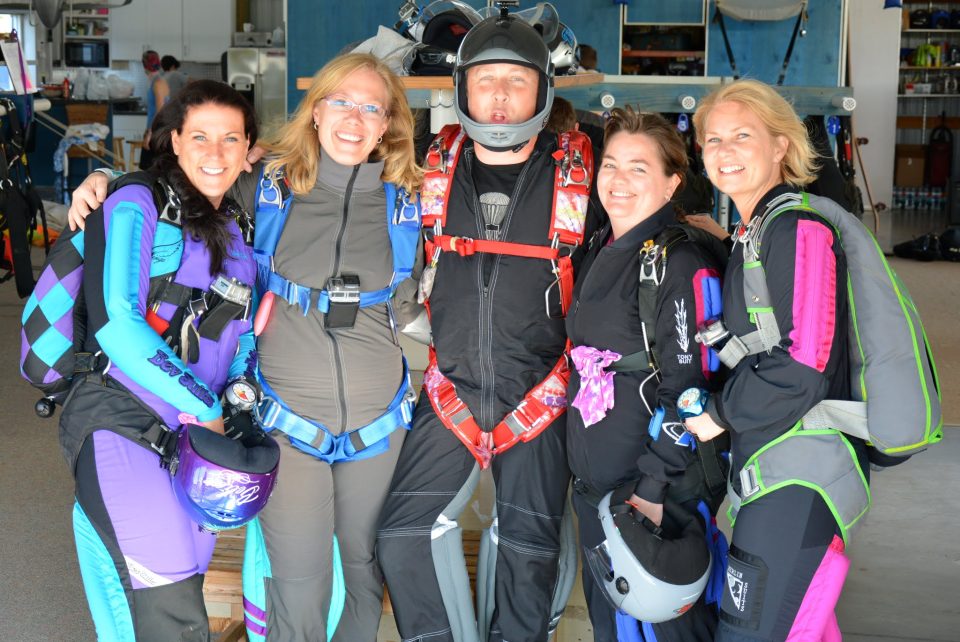
What is the AFF Progression?
Most AFF programs consist of eight instructor-led skydives that focus on everything you need to know to become a skydiver all at once. This is where the Wisconsin Skydiving Center Training Program takes things a step above traditional AFF programs.
Our Learn to Skydive Program includes all of the jumps, knowledge, and skills you would find in any other AFF progression, but we segment the curriculum into phases that are easier to understand and retain.
Jumping out of an airplane is overwhelming enough! And doing it alone is even moreso. Breaking apart the training allows students to consume the material in a more manageable way and increases the likelihood of success.
We help you focus on the mechanics of skydiving while building competence and confidence – all things that are crucial to safe and enjoyable skydiving.
The Wisconsin Skydiving Center Training Program consists of four phases. These four categories create a foundation upon which each new phase builds:
- Tandem Skydive
- Solo Exit & Canopy Flight
- Freefall Work
- Certification
Each phase focuses on very specific skills that ensure competency before introducing more critical information. As you progress through the phases, you’re granted more and more freedom in the air until you are able to fly with no instructors present.
1. Tandem Skydive
You’ll start out strapped to a tandem instructor who will talk you through all the important aspects of your jump for comprehensive understanding.
2. Solo Exit & Canopy Flight
After a three-hour ground course focused on parachute flight, you’ll move onto exiting the plane solo with instructor assisted deployment so that you can focus on nailing your exits and learning how to land your parachute.
3. Freefall Work
Next, it’s back to the classroom for another three-hour ground course – this time focused on freefall. You’ll then take what you’ve learned up to altitude and put it all together! First, you’ll jump with two instructors, practicing stability and awareness, and deploy your own parachute. Once you’ve shown proficiency, you’ll jump with just one instructor … and then you’ll go solo!
4. Certification
Once you’ve mastered freefall, you’ll not only have all the knowledge and skills you need to pass the USPA-required exam and achieve your A-license!
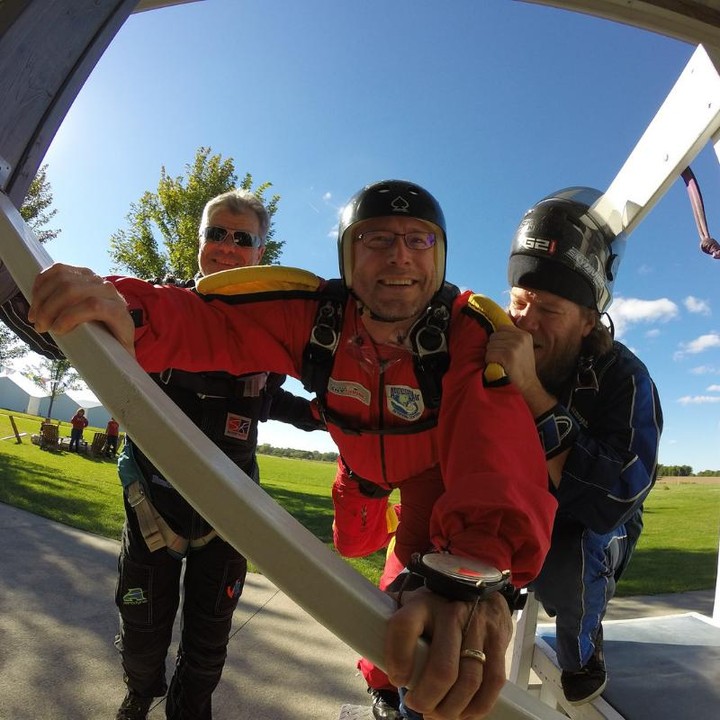
What Types of Skydiving Licenses Are There?
The skydiving license progression is made up of four levels: A, B, C, and D. Each license has its own set of requirements that are established by the USPA.
USPA A License Requirements:
- complete 25 freefall jumps
- complete all requirements listed on the USPA A License Proficiency Card
- complete 5 group freefall skydives involving at least two participants
- pass the USPA-developed written and oral USPA A License exams conducted by a current USPA I, Examiner, S&TA, Judge or USPA Board Member
USPA B License Requirements:
- meet all current requirements for, or hold, a USPA A License
- complete 50 jumps, including:
- accumulate at least 30 minutes of controlled freefall time
- land within 33 feet of target center on 10 jumps
- successfully complete the planned formation(s) on 10 formation skydives, or 10 formation freefly skydives, at least 5 of which, in either discipline, must involve at least three participants
- document live water landing training with full equipment in accordance with the procedures in the Skydiver’s Information Manual (SIM)
- complete all of the requirements listed on the USPA Canopy Piloting Proficiency Card
- pass the written USPA B License exam conducted by a current USPA I, Examiner, S&TA, Judge or USPA Board Member
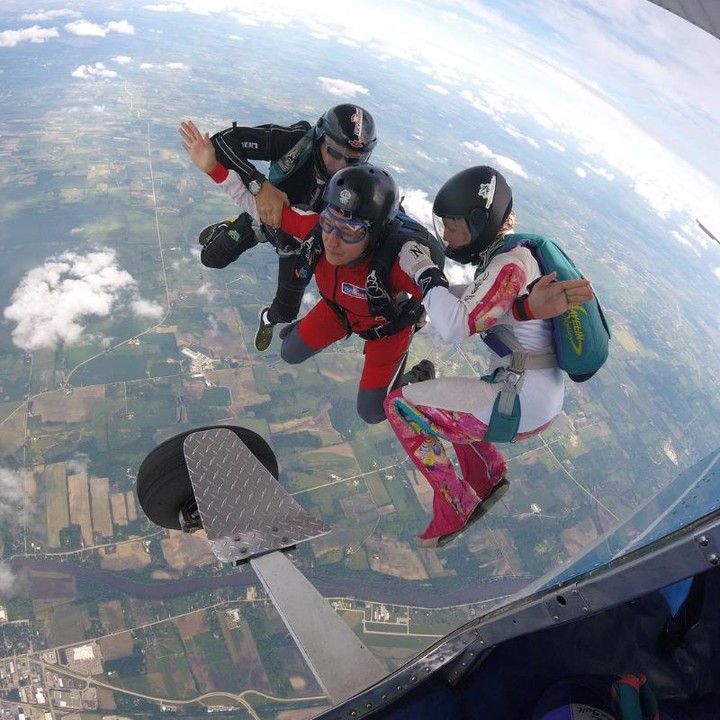
USPA C License Requirements:
- meet all current requirements for, or hold, a USPA B License
- complete 200 jumps, including accumulating at least 60 minutes of controlled freefall time
- land within 7 feet of target center on 25 jumps
- complete 50 formation skydives, or 50 formation freefly skydives, at least 10 of which, in either discipline, involve at least four participants
- pass the USPA written C License exam conducted by a current USPA I, Examiner, S&TA, Judge or USPA Board Member
USPA D License Requirements:
- meet all current requirements for, or hold, a USPA C License
- complete 500 jumps including accumulating at least 3 hours of controlled freefall time
- complete at least 2 of the following skills requirements (a requirement may be repeated):
- perform a night jump (following the SIM recommendations)
- land within 7 feet of the target center on 100 jumps
- participate in a canopy formation of a 3 stack or larger, completing a full rotation
- complete an intentional water jump
- complete 100 formation skydives, at least 25 of which must involve at least eight participants
- pass the written USPA D License exam conducted by a current USPA Examiner, S&TA, Judge Examiner or USPA Board Member
Just as each license has certain specifications to be met, they all come with their own set of privileges. It’s not just the skydive that’s an adventure, it’s the journey!
And, of course, the big question is, “how much does it cost to get a skydiving license in the US?” The final cost of a skydiving license depends on how many jumps you need to complete in order to pass all of the skills checks. But jump prices range from $64-$255 depending on the level. Check out our price breakdown for more information!
Our goal at Wisconsin Skydiving Center is to empower you to achieve the dream of flight and equip you with the knowledge and skills that you need to become a confident and responsible certified skydiver. We’re the best dropzone in the midwest to make this dream a reality.
Want to answer the question “is it worth learning to skydive?” Take the first step on your solo skydiving journey and schedule your AFF ground course today! Blue skies.
Categories:
You May Be Interested In:
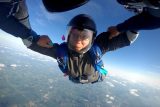
How Long Does A Skydiving License Last?
5 months ago by Wisconsin Skydiving Center
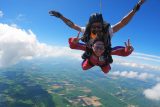
Skydiving License 101: Understanding Different Types and Their Requirements
5 months ago by Wisconsin Skydiving Center
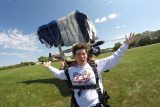
First Skydive – Tandem Skydive or Solo Skydive?
7 months ago by Wisconsin Skydiving Center
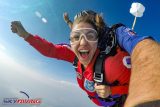
How Much Experience Do Skydiving Instructors Have?
11 months ago by Wisconsin Skydiving Center